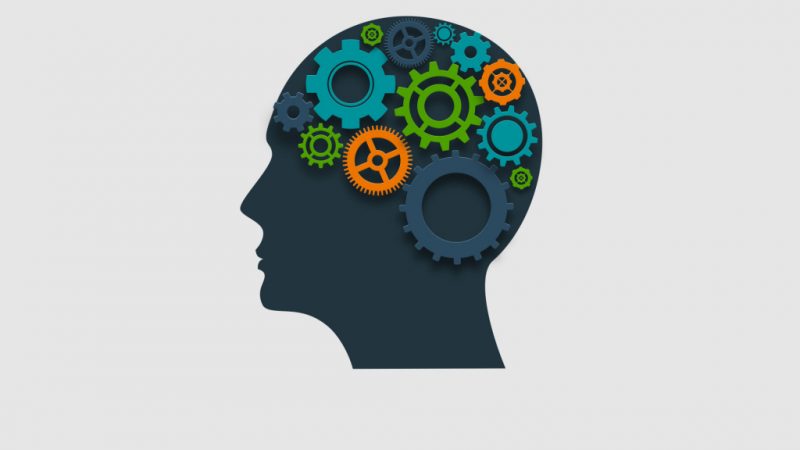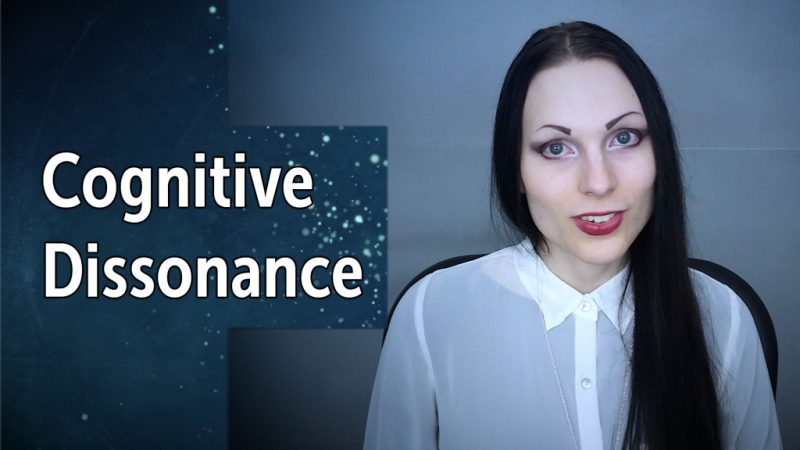The phrase “cognitive dissonance” often sounds in various forums and discussion platforms. However, it does not always sound out of place and often out of place. Some mistakenly use it as a synonym for “irritation” or “stress”. A common example: “From these scandals, I have constant cognitive dissonance.” To understand what this term actually means and where it came from, the proposed material will help.
Material Content:
Cognitive dissonance - what is it, in simple words
To explain the meaning of the concept of “cognitive dissonance” in simple words, one must turn to its origin. The word "cognitive" means "associated with knowledge." "Dissonance" is a contradiction, a violation of harmony.
Adding these values like cubes, you can get a fairly simple definition.
Cognitive dissonance is a contradiction that occurs within a person’s system of views and perceptions.
Causes of the disorder
From the very early years of life, starting to know the world, a person gradually forms his own system of ideas about how this world is organized.
Various factors affect it to the same extent:
- education;
- education;
- national and cultural characteristics;
- personal experience and personal thoughts about life.
As a result, a stable structure is formed, and the older a person becomes, the more solid and even inert his cognitive system becomes.However, life in all its diversity is constantly striving to undermine this construction. It changes itself, destroys old values, throws discoveries, creates contradictory situations and makes a person change. If a person resists, he develops an internal conflict.
More often than not, stiff cognitive dissonance is experienced by people with strong beliefs.
But to a mild degree, this condition is familiar to everyone. For example, when snow fell on May holidays in central Russia in 2017, many, looking at tulips in snowdrifts, experienced little internal dissonance - a mismatch between a clear idea of May weather and a real phenomenon.
How a person behaves in a state of dissonance
The behavior of a person experiencing cognitive dissonance depends on many factors:
- degrees of personal flexibility;
- severity of dissonance;
- the degree of closeness of the contradiction to the principles and ideas that are vital for a person.
In light dissonance, most often people joke, shrug and adjust their views on the world. As Mussolini said, "only idiots and the dead do not change their beliefs."
More or less severe cognitive dissonance causes severe internal discomfort.
In order not to collapse the entire cognitive structure, the psyche includes protective mechanisms:
- Negation. A person aggressively rejects facts or phenomena that threaten his values and ideas, or declares them unreliable, false. A milder form of denial is to ignore discomforting information.
- crowding out. Facts that conflict with the cognitive system are “forgotten”, forced out into the subconscious.
- Rationalization. In this case, human behavior resembles the behavior of a fox from the fox "Fox and Grapes." A person builds false explanations and motives around a traumatic fact or information.
All these protection systems, unfortunately, do little to cope with cognitive dissonance.
The main hypotheses of the Festinger theory
The author of the term “cognitive dissonance” and the whole theory considering this phenomenon is Leon Festinger, a well-known specialist in social psychology. Its predecessors were the Germans Fritz Haider and Kurt Levin.
The main hypotheses that Festinger put forward as part of his theory are very simple:
- Experiencing dissonance, a person will try by any means to reduce the discrepancy between external information and internal beliefs, returning his cognitive system to a state of consonance (harmony).
- Since cognitive dissonance is a source of severe stress, a person will try to avoid the phenomena, information, or situations that cause the disorder.
The protection mechanisms described above and the ways people behave in this state fully confirmed Festinger's hypotheses. Nevertheless, his theory of cognitive dissonance has been criticized many times for uncertainty, artificiality, and inattention to the individual characteristics of a person.
Life Cognitive Dissonance Examples
To finally clarify the meaning of the term “cognitive dissonance”, we can illustrate it with specific life examples:
- Participants of the first scientific expeditions to Africa, communicating with the natives, observed their manifestations of cognitive dissonance in the form of ordinary matches. In the system of representations of these tribes, fire was of divine origin and could be obtained only thanks to the spirit of fire.
- In turn, the researchers themselves sometimes experienced cognitive dissonance, encountering local sorcerers who healed severe wounds and illnesses with spells. The facts of cure came into sharp conflict with the scientific picture of the world.
Humanity has repeatedly experienced massive cognitive dissonances in its history when great discoveries, social or cultural transformations occurred.At different times, the sources of such dissonances were Darwinism, feminism, the research of Nikola Tesla, or Einstein's theory of relativity.
The most striking example of cognitive dissonance was experienced by humanity about two millennia ago, when a wandering preacher from Galilee proclaimed the abandonment of the ancient principle of "an eye for an eye." At that time, the ideas of Christ completely contradicted the deeply rooted ideas of people about the rules of life.
How to reduce, avoid dissonance
The famous rock musician and actor Jared Leto once said: “Breaking stereotypes and breaking through prejudices is an incredibly difficult, but fantastically pleasant thing.” If a person lives with a broad view of the world, his system of ideas does not lose flexibility. This minimizes the severity of cognitive dissonances.
A good way to reduce the manifestations of an internal conflict is the following psychotechnology:
- Having received information that contradicts the cognitive system, objectively and unbiasedly verify its compliance with truth and morality.
- If the fact is true, recognize your previous views as incomplete or erroneous and adjust your understanding.
- If the information is false or the fact is immoral, the cognitive dissonance will disappear by itself.
Thus, the only way to get along with the world and do without severe internal discomfort is to strive for objectivity, honesty, openness and expanding one's own ideas about life.
And this does not mean a rejection of principles. This is a rejection of self-deception, blindness and prejudice.


















